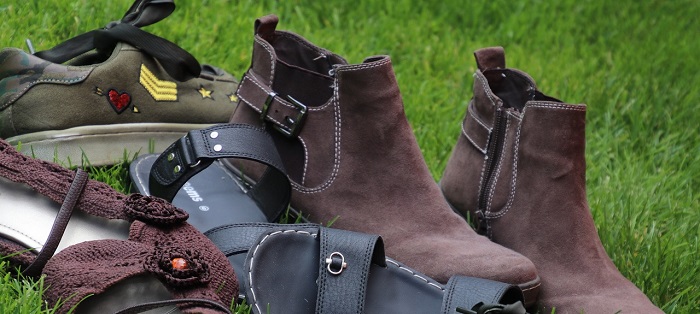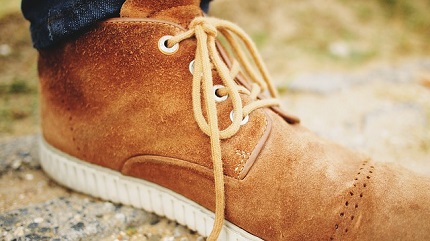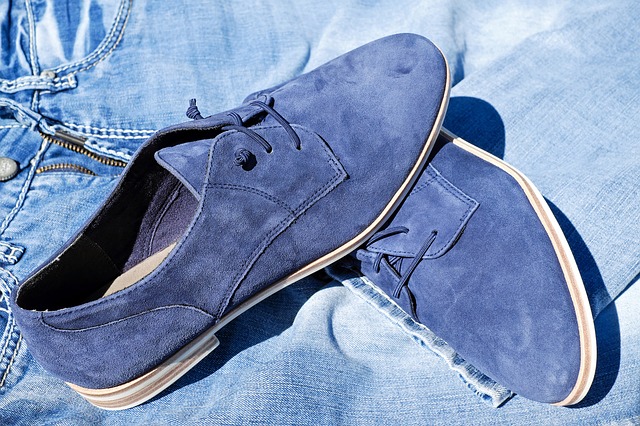Suede shoes have not lost their popularity for decades. They add a unique character to any fashion style - streetwear, smart casual or formal. Learn more about suede shoes in the guide below!
History of suede shoes
Suede was used by people as early as 6,000,000 years BC. The word suede comes from the French phrase "gants de Suede", which we translate to "gloves of Sweden". This material gained its popularity in France, specifically in the 18th century. Artisans called tanners have noticed that the inner parts of the leather are much more comfortable and pleasant to the touch than the rough outer layer.
Suede was worn by the nobility and was mainly used to make gloves. Over time, craftsmen began to make handbags, jackets, shoes and many other another types of clothing.
In its current form, natural suede is made of treated animal skin, which does not have a grain part. Over time, synthetic suede began to be produced.
It is worth saying that the cult Suede sneakers released in the 70s by Puma brand were the reason for the dissemination of the suede material used for making shoes.

Suede features
The leather of the animal is soft and ductile. It is distinguished by a very short fiber. Due to its matte appearance, suede has a very luxurious character. In turn, the flexibility of suede allows you to create original shapes. It is also worth noting that footwear made of suede is thus stretchable, which gives greater comfort, for example, to people with slightly wider feet.
What is worth knowing about suede shoes?
As we know from the story just described, suede shoes can be both sporty and formal. What this type of footwear has in common is the need for a lot of attention both when wearing and cleaning. Suede does not cope well with rain or snowy weather - it tends to get wet quickly.
If we allow for various dirt too often - it will certainly affect the visual qualities and durability of the suede material. So try to limit your exposure to bad weather as much as possible.
One thing is certain - never allow a situation where it is impossible to clean all dirt from your shoes. Therefore, regularity is a key issue.
Remember that in the process you can use renovation preparations or antibacterial sprays.

How to safely clean suede shoes?
As we have already mentioned - suede is delicate. Therefore, in no case do not use a wet and low-quality cloth. To clean suede, it is worth using specialized preparations and safe equipment, e.g. soft cotton and microfiber cloths. Don't forget to feel for your routine cleaning, as it's not hard to damage suede with too much scrubbing.
If you want to be sure that the suede will look the same after each cleaning - use a special suede eraser. On the market you will also find dedicated preparations for suede leather.
Do not forget about other elements of footwear that are made of a different material, e.g. soles or leather elements. You will get the most refreshed look by washing the laces, if they are present in suede footwear. To wash the sole, use a preparation intended for this element of footwear.
What if your suede gets very dirty?
There is no denying that suede is a demanding material in terms of all kinds of dirt typical of, for example, autumn, spring or winter. Dirt that gets onto the surface of such shoes should be removed as soon as possible.
Let’s start with dry cleaning using the aforementioned microfiber cloth or a good quality soft-pile cotton. If this does not help - use a stronger preparation, but intended for suede. We repeat that the most important thing is the reaction time.

Summary
On the one hand, suede shoes are great-looking footwear, but the price is care in the form of regular cleaning, gentleness in care and the use of appropriate preparations and equipment. In this way, you will get the effect of eternal freshness even after a long time of use. Don't forget not to go for long walks in such shoes, especially when the weather is not conducive to it.